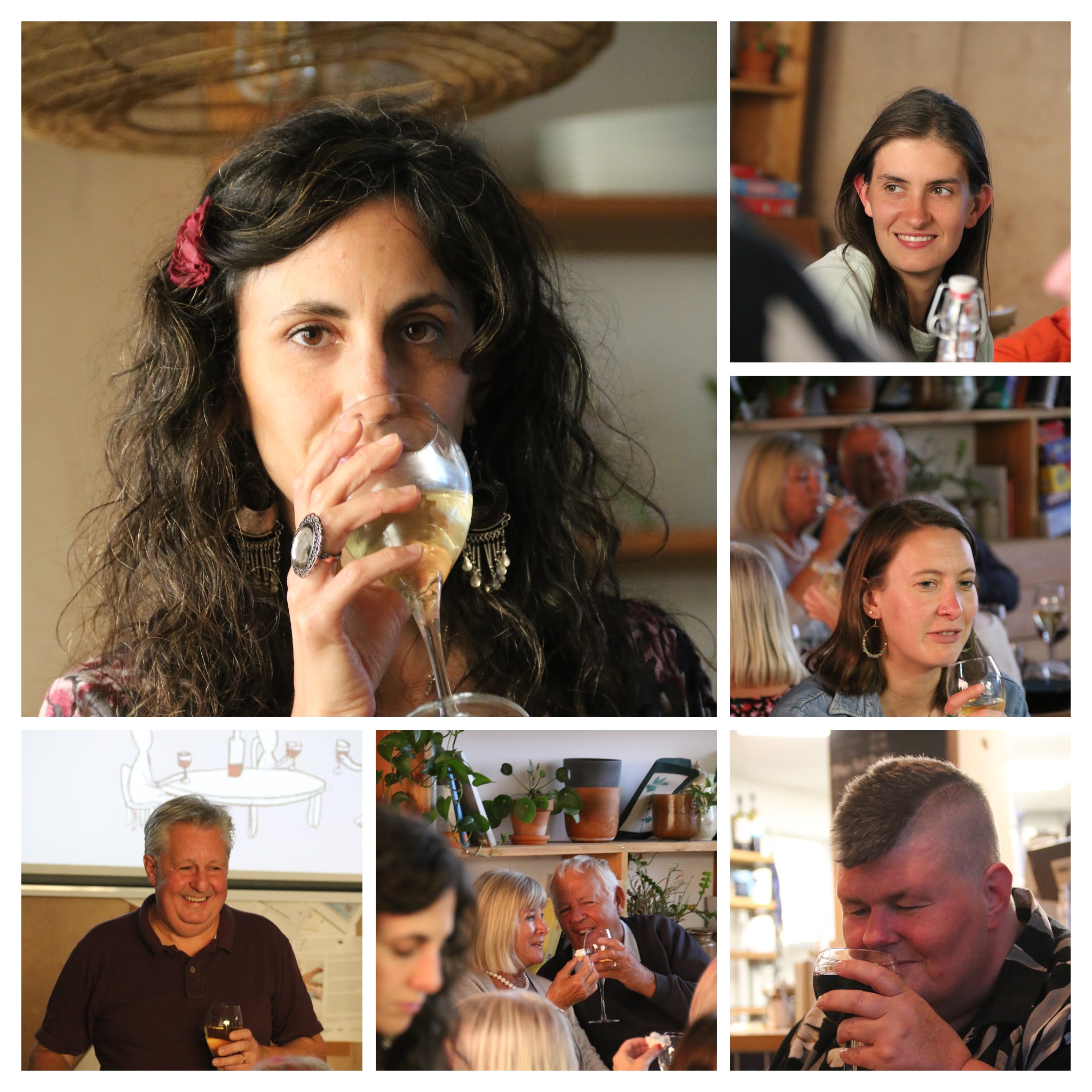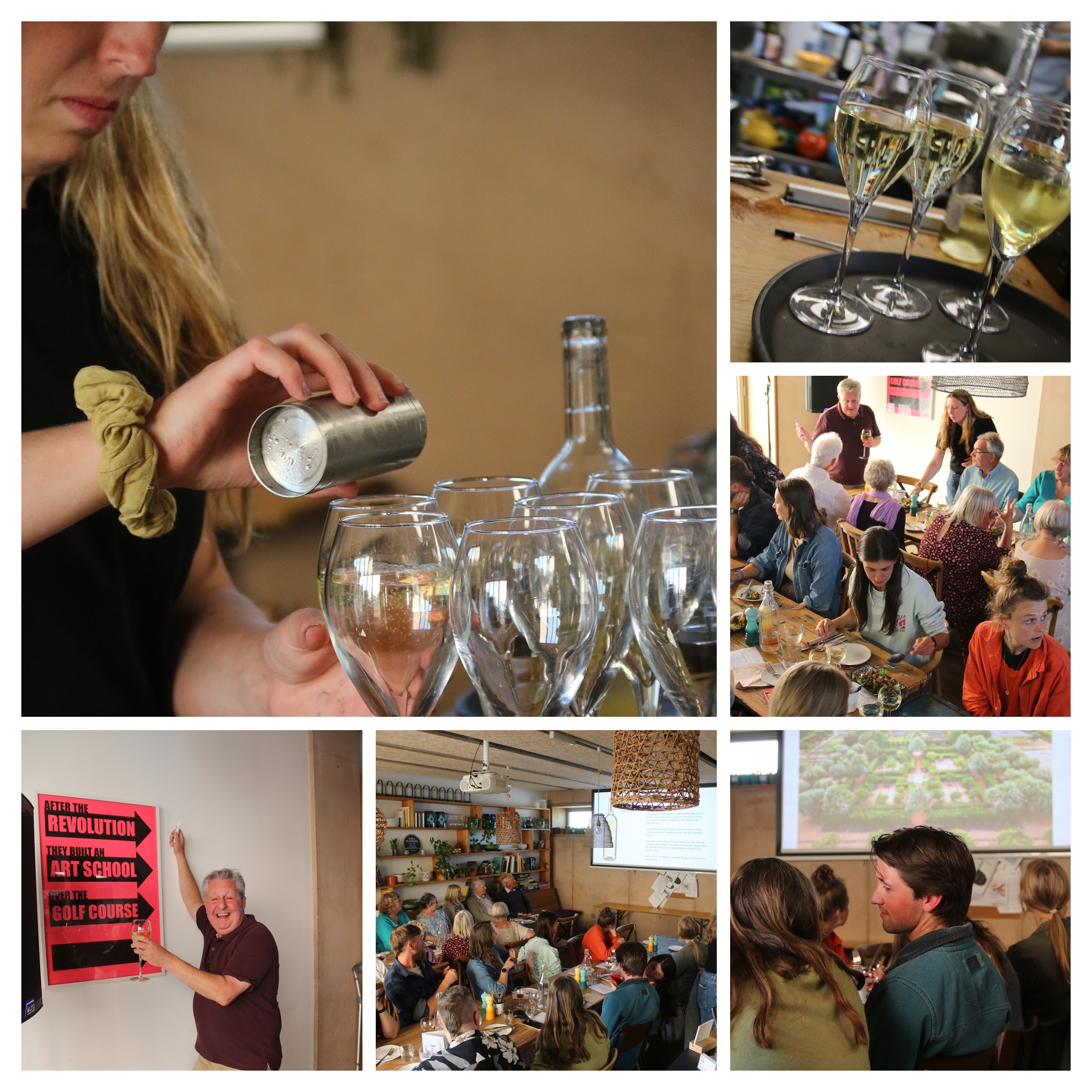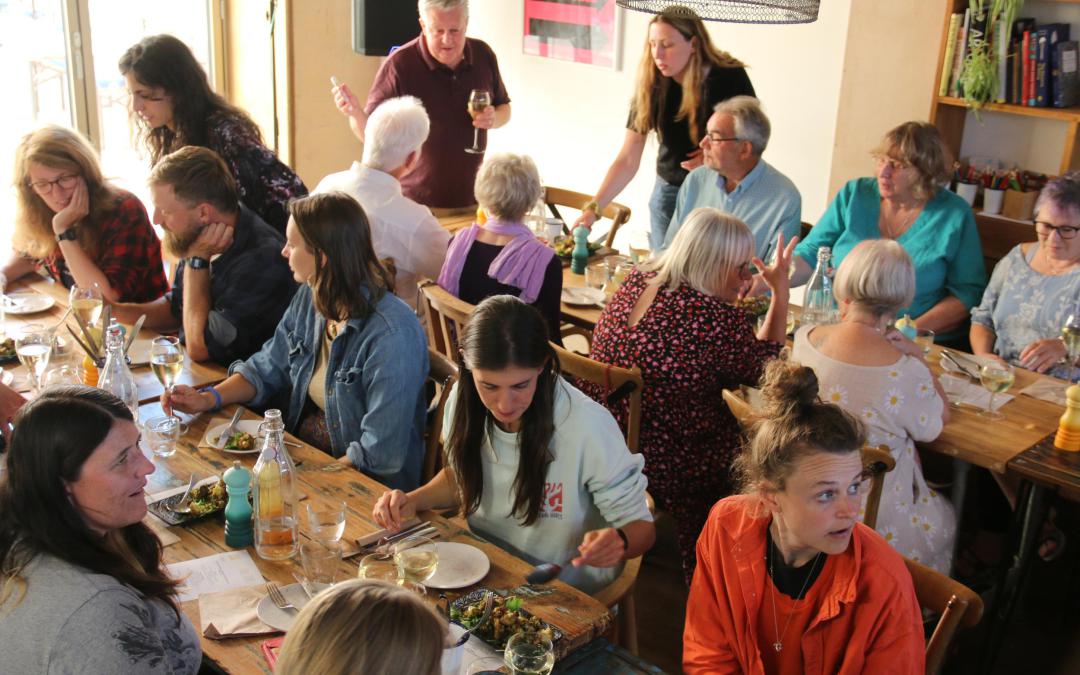Last week, Geckoella had the pleasure of hosting a lively and well-attended Geology and Wine Evening in the East Quay Kitchen, an event that brought together curious minds, good company, and a world tour of wines with a twist: each glass told a story not just of place and grape, but of ancient rock and soil.
Guided by our “Sommelier“, Dr Andy King, our theme explored how the geological underpinnings of a region shape the wines we love, from volcanic soils to glacial gravels. Our guests were treated to four wines from dramatically different landscapes, each paired with fascinating geology and plenty of cheer and some delicious freshly made nibbles from the kitchen.
Wine 1: Santa Tresa, Rina Russa – Frappato (Sicily, Italy)
Old World, Red
We began in the sun-drenched southeast of Sicily, where Frappato grapes thrive in distinctive iron-rich lateritic soils known locally as Rina Russa. These rust-coloured, gravelly soils sit beside ancient limestone hills formed 23–24 million years ago during the Oligocene/Miocene epochs.
The wine mirrored its vibrant terroir—light cherry-red, semi-translucent, with charming notes of wild strawberries, sour cherries, and rose petals, rounded out by hints of sweet spice. A delicate, joyful start to our journey.
Wine 2: Babylonstoren Viognier (Franschhoek, South Africa)
New World, White
Next, we crossed the equator to South Africa’s Franschhoek Valley, where Viognier vines are rooted in Dundee-type fluvisols, formed from ancient 450-million-year-old Ordovician sandstone of the Table Mountain Group.
This pale straw-coloured wine pleased our audience, with a slightly creamy texture and fragrant notes of peach, apricot, honeysuckle, and apple blossom – all accented by tangerine zest and a whisper of oak spice. The geology beneath truly lifted the wine above.
Wine 3: Gouguenheim Flores Malbec (Uco Valley, Argentina)
New World, Red
Then we soared to the heights of Argentina’s Uco Valley, nestled at the foot of the Andes. Here, Malbec vines are nourished by alluvial fan soils and glacial meltwater, with roots spreading through gravelly sediments carried down by the mountains.
The resulting wine was as bold and dramatic as the landscape: deep purple, velvety, and aromatic, bursting with ripe plum, black cherry, violet, and layered with vanilla, wood spice, mocha, and smooth tannins. A geological powerhouse in a glass, and we all agreed it would be a great accompaniment to a meaty dish.
Wine 4: Bodegas Aquitania Albarino (Galicia, Spain)
Old World, White
Finally, we returned to Europe’s Atlantic edge, to Galicia, Spain, where Albariño vines cling to granite outcrops in soils rich in weathered decomposed granite grit and sharp pebbles—known locally as xabre. The vines, trained high on granite pergolas, catch both sea breezes and sunshine.
The wine reflected its coastal, mineral-rich origin: bright golden yellow, with grapefruit, green apple, pear, and hints of vanilla, plus a crisp saline minerality that evoked ocean spray. A fitting, refreshing finale.
Throughout the evening, the intersection of geology and winemaking sparked conversations, laughter, and newfound appreciation for how millions of years beneath our feet shape what ends up in our glass. Thank you to everyone who attended and helped make it such a vibrant and educational experience, and thanks to Andy for his entertaining lecture/stand-up comedy.
We look forward to the next time we raise a glass to the ground beneath us. Keep checking here and on our social media for news of Geology and Wine 3.



